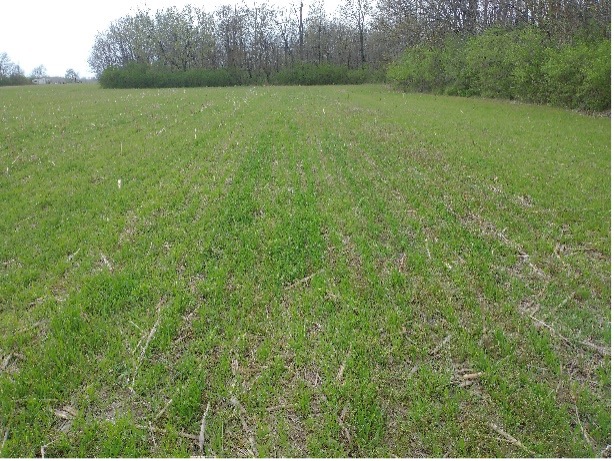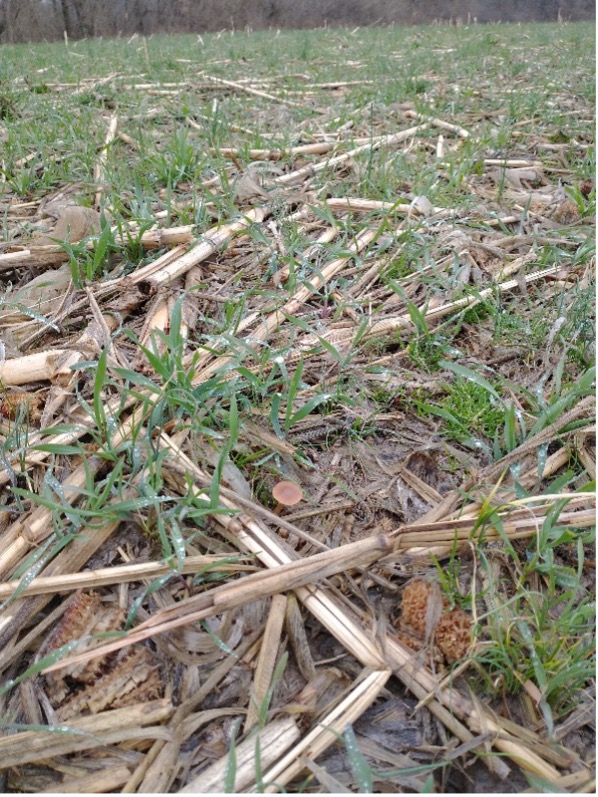Everywhere you turn, the words “soil health,” “regenerative,” and “sustainable” are buzzing in the agriculture space. There are carbon credit markets, EQIP and CSP programs, and more N.G.O. programs than I can begin to name out there, each offering differing incentives in this space. If you are reading this hoping for insight on the meaning of “sustainable” or “regenerative,” I cannot offer any insight. If you are hoping to get direction on what programs are available to subsidize these practices, again, I am not an expert in that space and cannot provide you direction. However, what I can offer are my own experiences and insights that I have learned on my own farm and through growers I have consulted with on what soil health practices can do for your soil.
Soil is everywhere. If not for soil, life on this planet would cease to exist as we know it. Soil is one of the most complex and misunderstood systems on the planet. When you think of soil, I am sure most think of the minerals, sand, silt, and clay particles that we use to classify different soil types as well as organic matter content. What is largely overlooked, are the populations of fungi, bacteria, insects, micro arthropods, earthworms, and everything else living below our feet. What opened my eyes to the concept of soil health was thinking about what this land was before human management. Natively, our soils were never tilled, had constant diverse living roots, a mat of degrading plant residue always covering the soil, and large populations of grazing animals. Everything evolved to fill a place in the circle of life. As things die and decay, the next generation is there waiting to use the nutrients, minerals, and organic compounds so nothing goes to waste. It is from this system the Five Principles for Soil Health were developed:
1) Keep the soil covered,
2) reduce soil disturbance,
3) increase plant diversity,
4) continual living root, and
5) animal incorporation.
To me, soil health is a continuum scale. It is not an all-or-nothing proposition. The more principles incorporated over longer periods of time, the healthier the ecosystem of your field.
Rather than bore you all to sleep with the little bit I understand about soil ecosystems that could still fill pages, let’s dive into the meat of what can soil health practices do for your farm. We all understand decaying residue releases nutrients and that our cash crops scavenge way too small of a percentage of the chemical fertilizer we apply.

This is a picture I took of one of my farms. I strip-tilled 165 units of anhydrous ammonia last spring, and grew a decent corn crop off this field. After harvest, I drilled cereal rye with a no-till drill. I do not know how deep the roots of the rye are, but they’re over 18” deep because that’s as deep as I cared to dig with my shovel. If you can pick out deeper green strips in my rye, they’re on exactly 30” centers. So here is photographic proof that not all the nitrogen I applied before my corn crop was up taken by my corn crop. The living roots of my rye are scavenging nitrogen (and other nutrients) from the deep subsoil and transporting it back to the surface to be recycled when the rye is terminated and will become nutrients for my upcoming soybean crop. Those deep, fibrous roots are also relieving compaction, providing channels for the soybean roots to grow deeper than without, providing habitat and food for earthworms allowing for better water infiltration, and helping build soil structure.

Here is a close-up photo from another field of mine. That mat of corn residue and active growing rye will be great food and habitat for earthworms and soil fungi – you can even see a toadstool growing in the field. Whenever I was a doing full conventional tillage, I would never find an earthworm. Now, depending on the farm, I find two to five worms in every shovel full of soil I turn over. According to Clive Edwards, Ohio State University entomologist, very healthy soil has 25 worms per square feet or 1 million worms per acre. At a population of one million worms per acre, they excrete 66 tons of manure per acre and burrow the equivalent of 4,000 feet of six-inch field tile annually. It is hard to deny the power that much manure and drainage could do on an acre. My farms are not to that point yet, but that is what I am striving for.
Incorporating some of these soil health practices takes quite a big shift in mindset from the way our grandfathers farmed in conventional tillage situations. My biggest piece of advice for you is to find a Certified Crop Adviser in your area who has had experience with these production systems. It is also very important to realize that in limited tillage and cover cropped fields, you are trying to work with nature more. Mother Nature does not follow a calendar, so flexibility and ability to change from a set plan or set date is imperative to success. Start by attending cover crop field days and get to know experienced advisors. Be curious, ask a lot of questions, take your time, and make sure that you understand the pros and potential cons. Most of the horror stories related to cover crops I have heard in my career are the result of people new to the practice making misinformed decisions out of panic or lack of understanding. The best analogy I have heard is that conventional tillage farming is a lot like playing checkers – the game is straight forward. Farming with reduced and no tillage with cover crops is like playing chess. Be sure to find a good mentor or coach and unlocking the benefits will become a lot easier.




 and then
and then